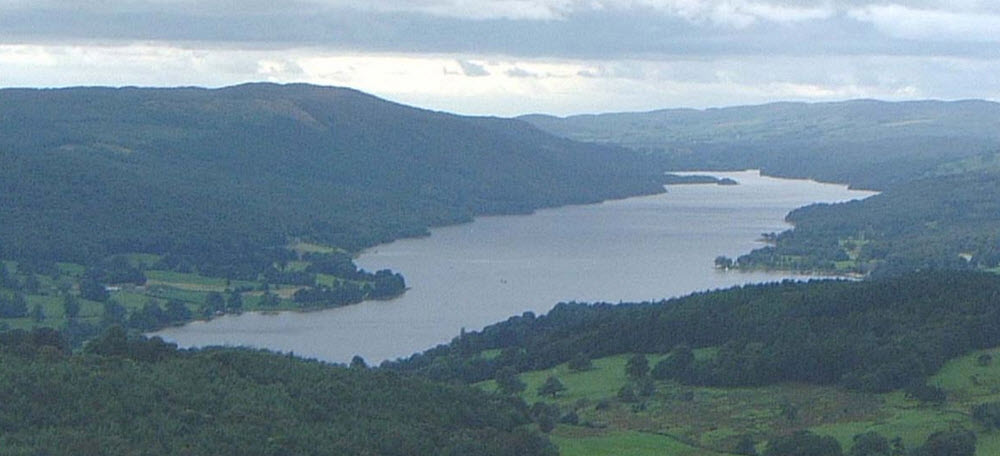Coniston Water is one of the lakes located in the Lake District, Cumbria. The lake is about eight kilometers long and 0.8 kilometers wide. The lake is located at an altitude of 44 m above sea level. It drains to the sea via the River Crake.
Coniston Water is located within the historic county of Lancashire. Today, Coniston Water is part of the administrative county of Cumbria.

Coniston Water is a ribbon lake formed by glaciation. A ribbon lake or loch is a long and narrow, finger-shaped lake, usually found in a glacial trough. Coniston Water is located in a deep valley shaped like an U.
The mountain “Old Man of Coniston” is located on the west shore of the lake. The top of the mountain is 803 meters above sea level, or 481 meters up from the ground.
From the village it is about a kilometer walk down to the lake. In Coniston Water, boats can be rented; motorboats, canoes, kayaks and paddleboards. There are also electric bikes and regular bikes for rent if you want to explore the surroundings around the lake. In the village there are pubs and restaurants, shops and guest houses as well as holiday cottages for visitors.
From March to October, there are steam-powered cruises starting from the Coniston Boating Center and other piers around the lake with the yacht .
There are various cruises around the lake, sailing from the Coniston Boating Center, stopping at Brantwood and other piers around the lake. They sails all year round, but not every day from November to February.
Coniston Water is the fifth-largest natural lake in England. It is eight kilometers long and 56 meters at its deepest point. During the 13th and 14th centuries, the land and lake were owned by the monks of Furness Abbey. For them, the lake was an important source of fish.
Later, Coniston Water was used to transport slate and ore. They had been mined from the Coppermines Valley mines above the village of Coniston. Coniston Water has three small islands, all owned by the National Trust.
Ancient remains from the Bronze Age, including the remains of agricultural settlements, have been found near the shores of Coniston Water.
During the Roman Empire, they mined copper in the mountains above the lake. Remains from potash kiln and two iron bloomeries show that industrial activity continued even during the Middle Ages.
Copper mining continued in the area until the 19th century.
Previously, the lake was called “Thurston Water”. The name comes from the Old Norse name “Thursteinn” and the Old English name for water which is “waeter”.
Both names were used on the lake until the end of the 18th century.
In the 20th century, Coniston Water was a place where many world records for fastest water speed were set.
On 19 August 1939, Sir Malcolm Campbell set the speed record in the lake with a speed of just a bit over 228 km/h. He was riding in a Bluebird K4.
Sir Malcolm’s son continued in his father’s footsteps and between 1956 and 1959 Donald Campbell set four consecutive records on the lake in a Bluebird K7, a waterplane.